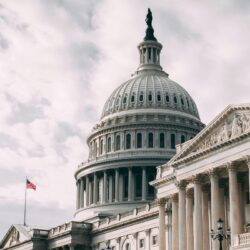 Public Policy
Public Policy Pew Report Puts Numbers on American Gun Violence
Monday night in his first-ever State of the Union address, U.S. President Joe Biden criticized barriers to lowering gun violence, a social plague which a data-rich paper from The Pew Research Center reports has attained new levels of perniciousness in the United States.
Citing statistics from the Centers for Disease Control and Prevention (CDC), “more Americans died of gun-related injuries in 2020 than in any other year on record,” Pew reports in What the data says about gun deaths in the U.S.
Despite this clear instance where social and behavioral research could help reduce the carnage, much as legislation prevents manufacturers from being sued legislation has long hamstrung federally funded research into gun violence. And while $25 million was set aside for research in 2020 (split between the CDC and the National Institutes of Health), most of the research lift has come from outside-funded groups like Pew.
Pew combed through data from the CDC, which gets its statistics from official death certificates, and the FBI, which is from voluntarily submitted information from police departments across the country. The CDC’s WONDER database was used to calculate the number and rate of gun deaths over time by creating three distinct time periods: 1968 to 1978, 1979 to 1998 and 1999 to 2020.
While most of the full timeline is similar, the CDC categorized gun murders and suicides between 1968 and 1978 as involving firearms and explosives, but narrowed from 1979 to 2020 to only include firearms. Deaths have been adjusted in this analysis for age changes over time. The FBI’s statistics about the types of firearms used in gun murders from the expanded homicide tables of the agency’s 2020 Crime in the United States report on the bureau’s Crime Data Explorer website.
In 2020, the most recent year for which complete data is available, 45,222 people died from gun-related injuries in the U.S. The total number of gun-related deaths was a 14 percent increase from 2019 and a 25 percent increase from five years earlier. While 2020 saw the highest total number of gun deaths in the U.S., this number has not been adjusted for the U.S. growing population. On a per capita basis, there were 13.6 gun deaths per 100,000 people in 2020, which although the highest rate since the mid-1990s, is still well below the peak of 16.3 gun deaths per 100,000 people in 1974.
The 19,384 gun murders in 2020 were the most since at least 1968, exceeding the previous peak of 18,253 recorded by the CDC in 1993. The 2020 total in gun-related murders represented a 34 percent increase from 2019, a 49 percent increase over five years and a 75 percent increase over 10 years. The 24,292 gun-related suicides that took place in 2020 were the highest in any year except 2018, when there were 24,432. The number of gun-related suicides has climbed 10 percent over five years and 25 percent over 10 years.
While the rate of gun fatalities varies widely between states, the highest states included Mississippi (28.6 per 100,000 people), Louisiana (26.3), Wyoming (25.9), Missouri (23.9) and Alabama (23.6), while New York (5.3), Rhode Island (5.1), New Jersey (5.0), Massachusetts (3.7) and Hawaii (3.4) had the lowest rates.
Additionally, there is no recognized definition of a “mass shooting,” however, The Gun Violence Archive, an online database of gun violence incidents in the U.S., views mass shootings as incidents in which four or more people are shot, even if no one was killed (excluding the shooters). Using this metric, 513 people died in these incidents in 2020. The FBI found an increase in active shooter incidents between 2000 and 2020. In 2000 there were three, but by 2020 it had increased to 40.


























































































